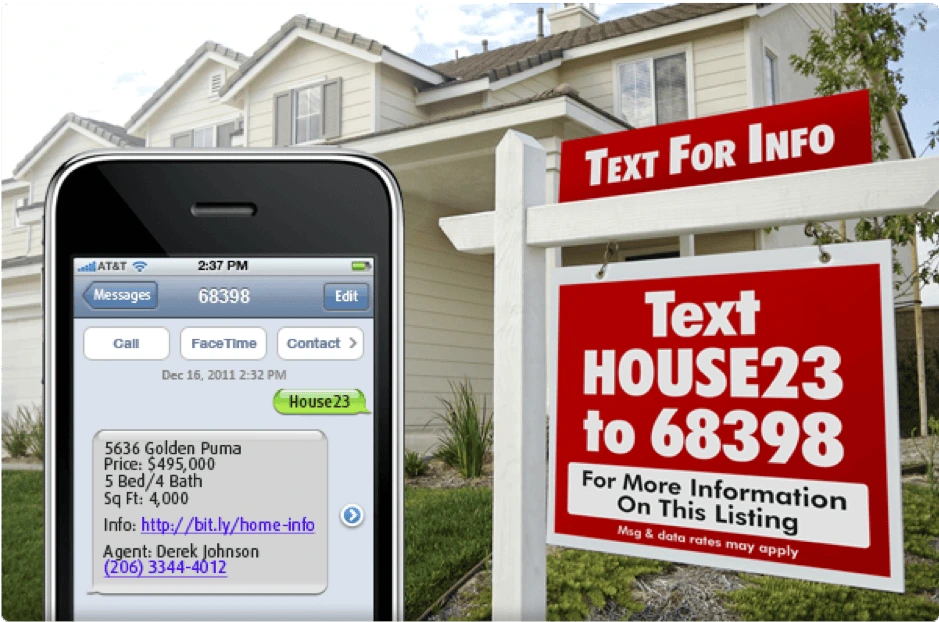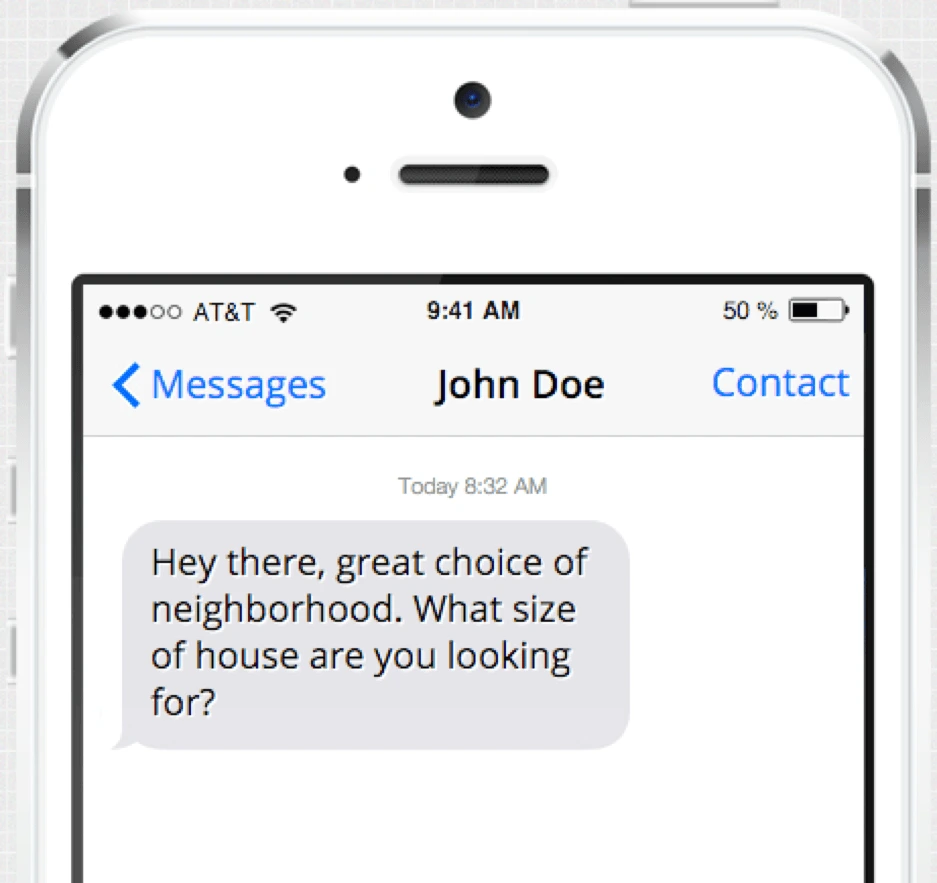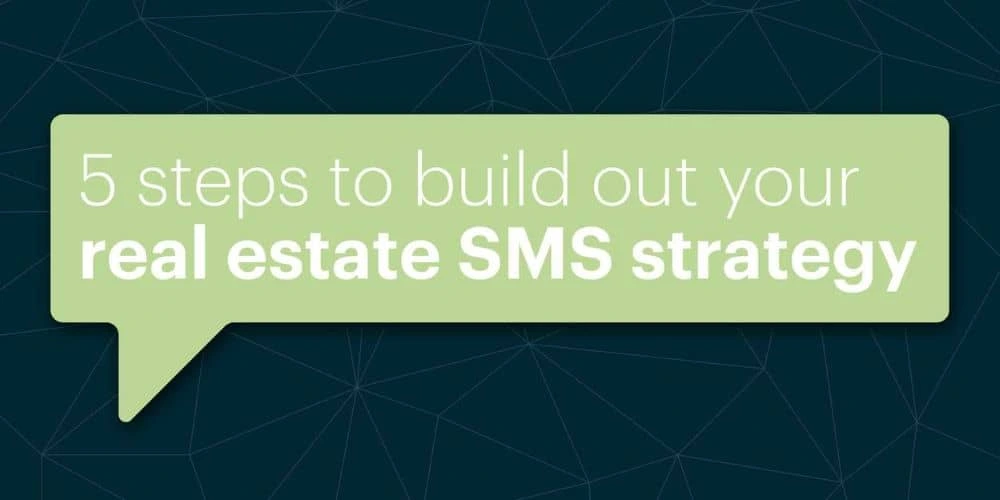Marketing is getting tougher and tougher—there’s no doubting that.
With 41% of brands planning to significantly increase their marketing budgets this year, and customers becoming choosier than ever, you wouldn’t be alone if you’re exploring new techniques to get more out of your marketing cash.
Related: The complete real estate marketing guide
One strategy you should consider is SMS marketing, the process of sending short text messages to your ideal customers in an attempt to engage them with your campaign and get them to convert.
Even though average open rates for SMS messages beat email by a whopping 28%, your real estate company sells homes for a large price—unlike small-ticket items that can be purchased on a lunch break.
So, how can you make text message marketing your biggest driver of website traffic, leads and sales?
Here are the five steps you’ll need to build out your mobile real estate marketing strategy, as well as two brands who are already killing it with their text messages.
1. Determine who you want to contact
Just like any marketing strategy, you’ll need to base your mobile marketing campaign on buyer personas—a clearly defined document that lists details about your ideal customer.
For real estate companies selling student accommodation, that might include:
- People with less than $20,000 to spend
- Between the ages of 18 and 25
- No long-term commitments
- Currently living within 5 miles of the local college
Once you’ve got this to a T, you’re left with a bunch of shared interests. Use this information to find the people you want to target with your text messages.
2. Collect their information
The next step in your real estate text message marketing strategy is to collect the information of the people you’re targeting. You can do this by taking advantage of your other marketing strategies.
For example: why not run a Facebook ad, using the details you defined in your buyer persona, to encourage them to fill in a form? (You might need to offer an incentive to do this, such as a free ebook or a guide to purchasing a new home.)
But once you’ve got their information, don’t push the Send button just yet. You’ll need to have explicit permission from your prospect before sending an email, or you could land a hefty fine—and an unhappy buyer.
3. Choose an SMS marketing platform
While purchasing a new phone to send out your new messages is a great way to get started, it’s wise to invest in an SMS marketing platform from the outset.
That way, you can:
- Track various metrics after you send, including open and response rates
- Send SMS messages in bulk
- Personalize each message you’re sending
- View your strategy online, and share with other staff on your marketing team
Platforms like Text Local, Text Request and Textedly can help with this, just to name a few.
4. Select a text messaging schedule
Gotten to grips with your new software? Awesome! It’s time to make a start on your text messaging schedule.
You’ll want to put some thought into the time of day you’re messaging your potential buyers, and the day of the week they’re being delivered.
Why? Well, because texting your customer at 11pm could frustrate them—they’re likely to be asleep. However, sending an SMS message at 5pm could reach your customer when they’re on their daily commute with time to respond.
Find the perfect schedule by referring back to your buyer personas and filling out a daily routine for them.
Remember: You want to push your messages at times they’re unlikely to be busy—and have time to invest into their search for a new home.
5. Perfect your messages
Before rushing off and sending the first message that comes to your head, take some time to think about what you’re actually sending. You don’t want to send 10 messages only to find a spelling mistake, right?
Use key copywriting principles to make your sales messages as effective as possible, and focus on replicating your ideal customer’s language.
Going back to our example of student accommodation, this example:
“Ready to let your hair down at this years’ Homecoming? Make sure you’ve got somewhere safe to call home. Reply PARTY to find five local student dorms near Stamford from just $200/month.”
…would be much better than:
“With stunning high ceilings and low-interest mortgages, find student accommodation near Stamford to help with your studies. Reply YES to opt-in.”
Why? Because it’s avoiding the overused jargon that would push them away and making your real estate brand feel more relatable.
2 awesome examples of real estate companies using SMS marketing
Ready to make a start on your SMS marketing strategy and see tons of new leads roll in?
Here are two awesome examples of real estate companies nailing their text message marketing strategy to provide inspiration for your own.
1. “Text for more information”
Earlier, we listed collecting your potential buyer’s information as a key part of your SMS marketing strategy.
…But, what if you could collect their information by asking them to hand it over in a way that suits them?
This real estate company used this idea on one of their “for sale” signs, asking potential buyers to text a number for more information on the listing. It’s a fantastic way to personalize the texts you’re sending—and make sure you’re only focusing on people who are actually interested.

2. Asking for more information
Another fantastic way to engage your potential real estate buyers through text is to ask them for more information, based off the data you’ve already got from them—like this example:

But, why does this work so well?
Well, the prospect doesn’t feel like they’re being contacted by someone out of the blue. They’ve mentioned previous information that’s already been shared (the choice of neighborhood), while asking for more in a way that prompts a response.
Key takeaway
Once you’ve made a dent in SMS marketing for your real estate company, we’re confident you’ll soon see a boost in new inquiries about your properties.
However, don’t forget that it may take some time to see results from your text message marketing strategy. Collecting customer information and perfecting your message can take a while, but don’t give up—you’re almost there.



